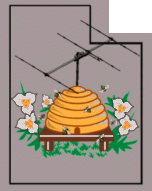
|
|
Help support this WebSDR via PayPal - or check, cash, etc. if you don't wish to use PayPal. Find out how!
|
The
Northern Utah WebSDR now has a YouTube channel - see it here! |
Salt Lake area 2 Meter and 70 cm receivers
|
This server - which is part of the Northern Utah WebSDRsystem - allows reception of the two meter band, the top 4 MHz (repeater outputs) of the 70 centimeter amateur radio band and a portion of the air traffic control (ATC) band from a location in East Mill Creek, Utah along the east benches of the Salt Lake valley at an elevation of 4800 Ft (1460 M) ASL , approximately 600 Ft (180 M) above the valley floor.
This server's coverage includes Salt Lake City and surrounding communities in the Salt Lake valley. It has limited visibility into Davis and Weber counties to the north, Tooele county to the west, and only marginal coverage into the western portions of Utah County to the south.
Recent news:
|
To invoke this page with a preset frequency and mode, append "/?tune=(freq
kHz)(mode)" to the URL and save it as a bookmark,
As in:
To pre-set the S-meter squelch, add "smsquelch=[n]" as in:
http://slc2meters.sdrutah.org:8901/?tune=146620fm?smsquelch=-88
Where "n" is the S-meter reading - which is ALWAYS negative - above which the S-meter reading causes the squelch to open. This value should be 3-6 dB above the no-signal S-meter reading for that particular band/receiver combination.
If you find that CatSync doesn't work with this WebSDR, add "?10hz" to the URL. There may be other issues with CatSync - read here.
Additional URL parameters are described on the "FAQ" page here. Reception of transmissions with subaudible tones A number of the repeaters that may be received by this system transmit a subaudible ("PL", "CTCSS") tone. If you find this tone to be objectionable, check the Notch2 box just below the volume control to remove it. If you know the frequency of the tone, you may selectively remove it using the "Vari-Notch, using the slider. |
|
For more information about the Northern Utah WebSDR - which has coverage on all amateur bands from 2200 through 2 meters - go to The Northern Utah WebSDR landing page. |
More
information about the WebSDR project, including a list of WebSDRs worldwide, may be found at http://www.websdr.org.
|
The Northern Utah WebSDR Landing Page
Everything you wanted to know about the Northern Utah WebSDR system!
About this WebSDR and contact info
and
Terms and Conditions of use
Technical Information
Latest News and known issues
Northern Utah WebSDR FAQ
Scientific Research
Additional information about this server:
For more information about this server, how its features work and how its receivers and antennas are configured, visit the Info page.




![[scale]](smeter1.png)